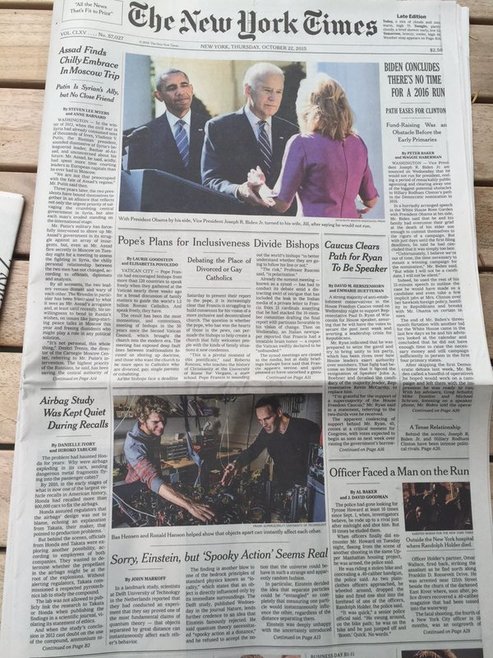|
Our loophole-free Bell test has now been published in Nature. In this experiment performed at the Hanson lab we entangled two nitrogen-vacancy (NV) centers in diamonds placed in laboratories on opposite sides of the TU Delft campus (1.3 kilometer). We then used this entanglement to demonstrate a violation of Bell's inequality. Because the NV center spins were measured with high accuracy and because the complete measurement (choice of measurement basis, spin readout, storage of result in classical electronics) was performed in a time so short that no communication between the labs was possible, the experiment closes all loopholes that were present in previous experiments.
Our results reject the hypothesis that nature obeys the principle of local causality (or local realism), providing the strongest evidence yet that the world is fundamentally non local. The only remaining ways to save the local casual worldview is to invoke that the measurement choice was already determined at an earlier time or that the results stored were still altered after they were saved in the classical computers. Such theories can be further restricted in future experiments - most excitingly by using humans on earth and on the moon/in space to select the measurement settings and record the data - but can never be completely excluded. The result made quite a splash in the media and was even featured on the cover of the New York Times. A good place to start is the coverage by the economist and two of the features by Nature (first, second). This experiment was based in the Hanson lab at QuTech and is a collaboration with the groups of Stephanie Wehner (QuTech), Morgan Mitchell (ICFO), Valerio Pruneri (ICFO) and Matthew Markham and Daniel Twitchen (Element Six). Comments are closed.
|

